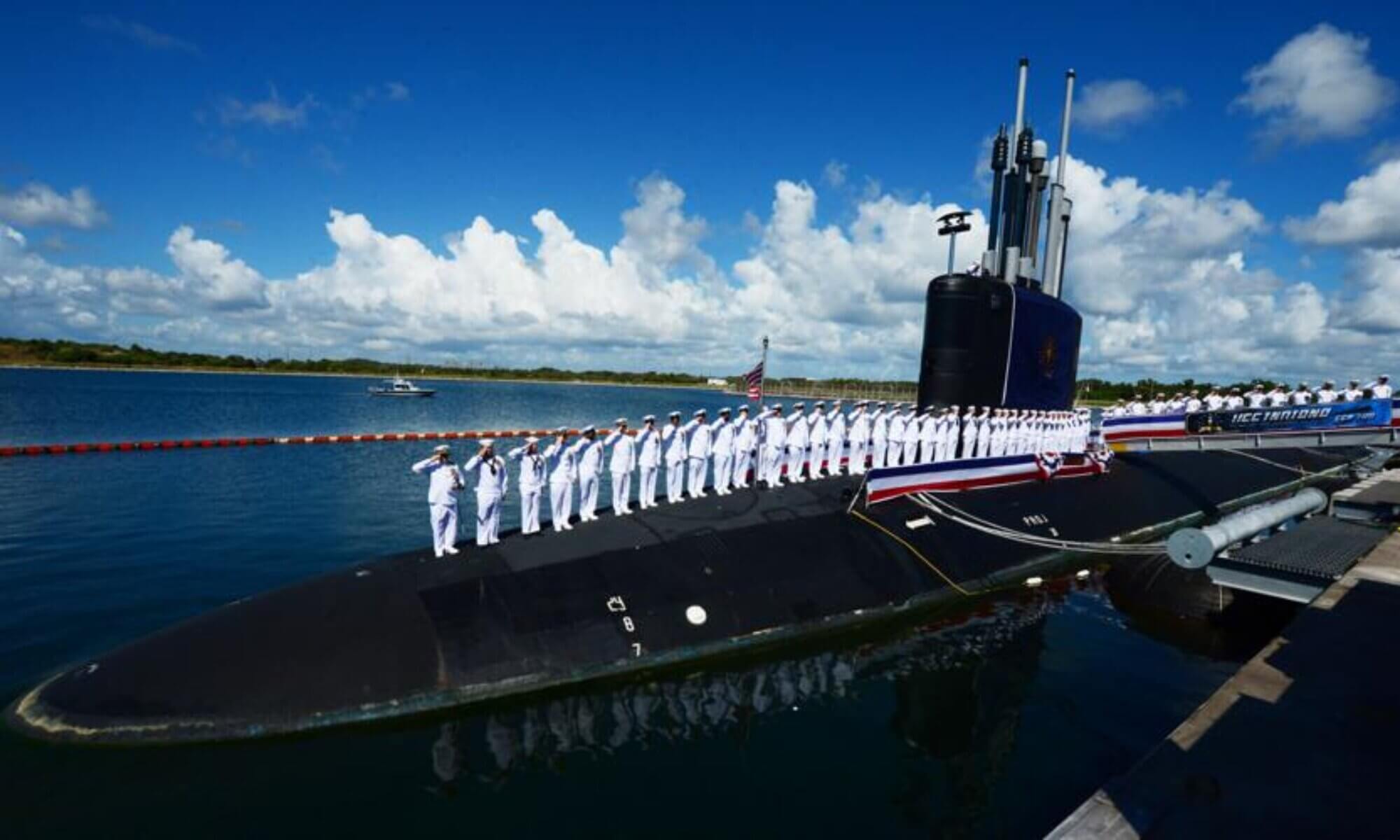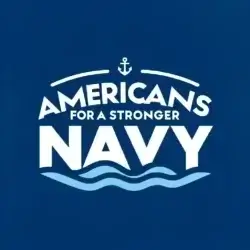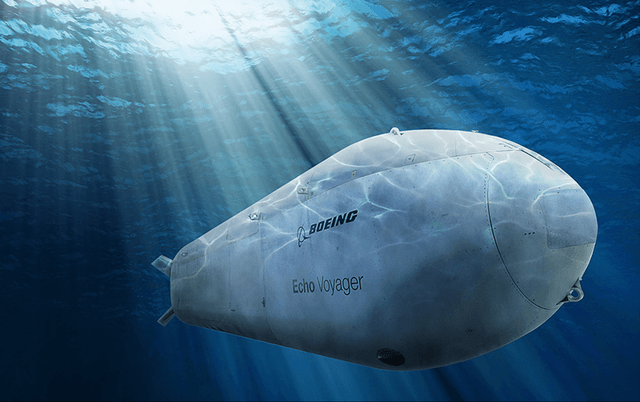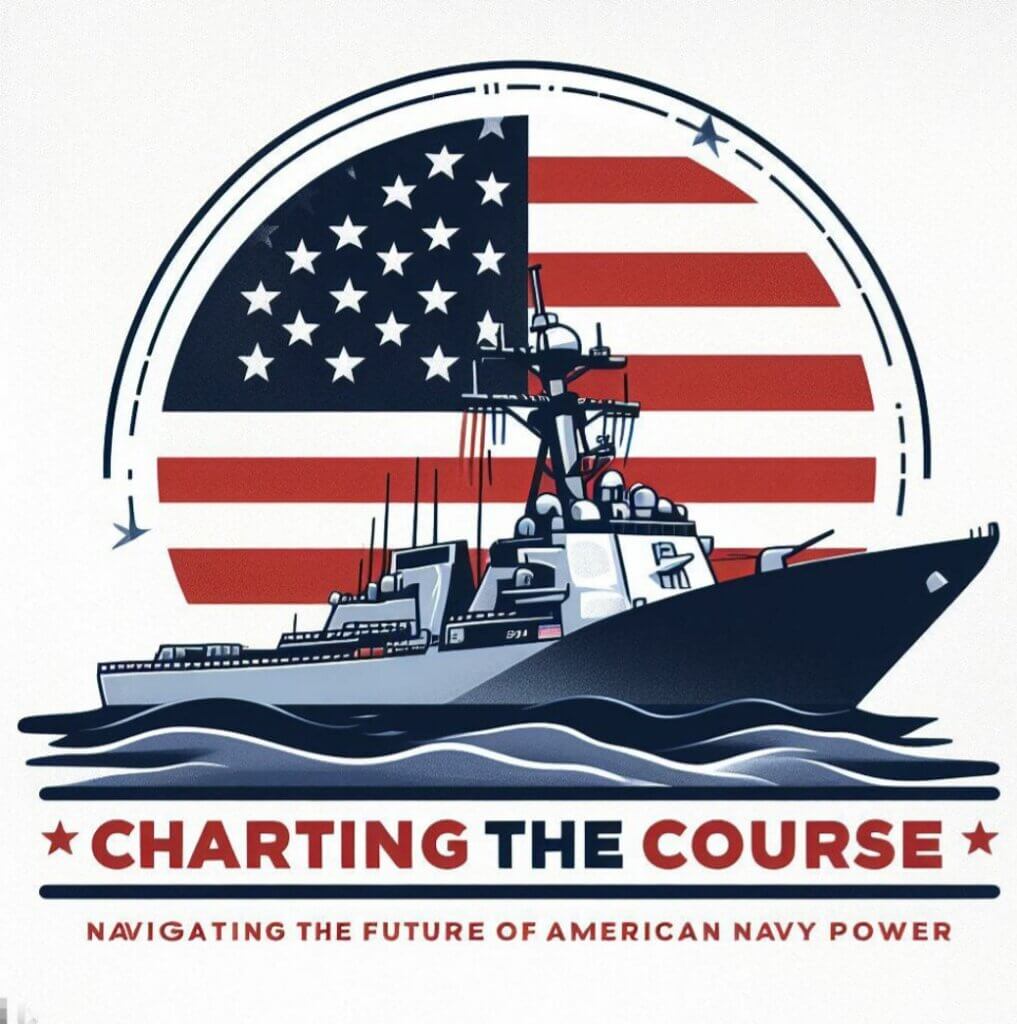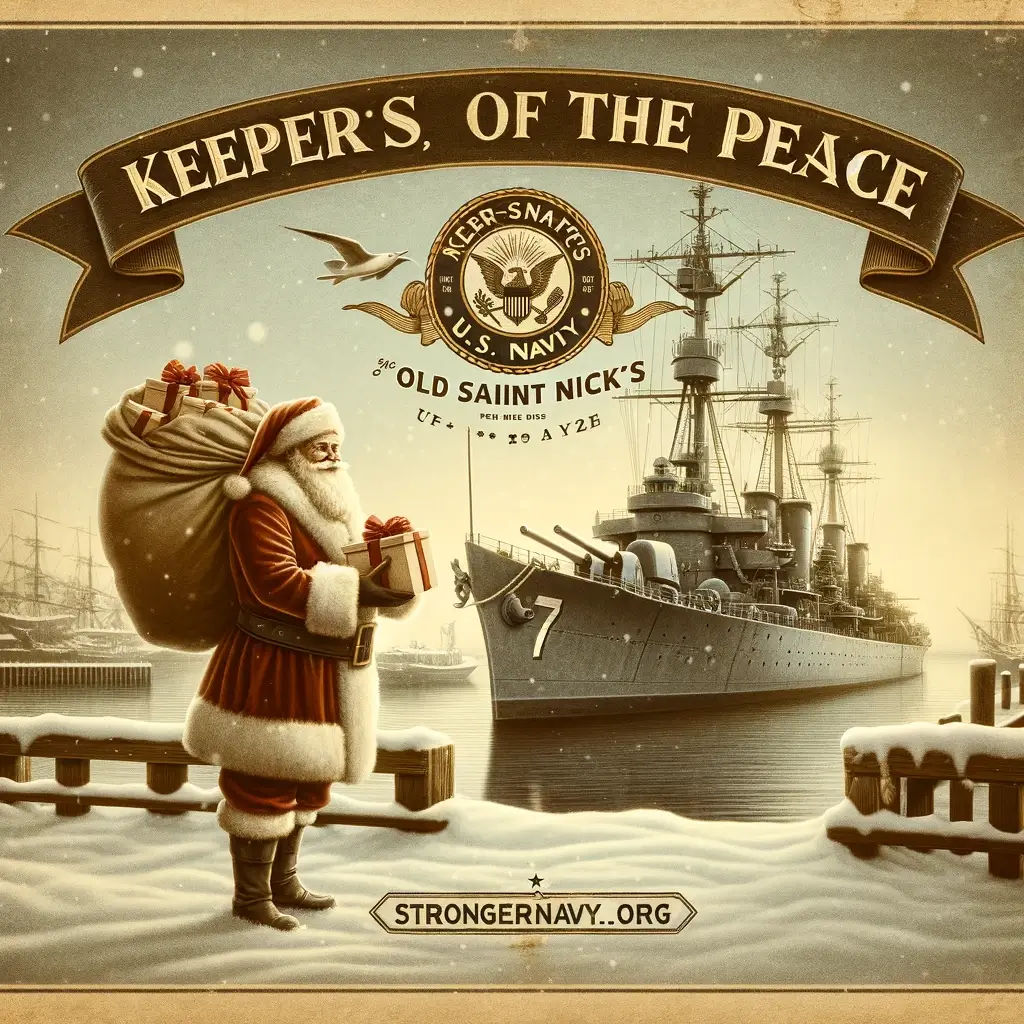
Introduction: A Year of Advocacy and Progress

A year ago, this month, the Americans for a Stronger Navy was launched with the goal of advocating for a stronger US Navy.
Recognizing the threats facing our nation, from system infiltrations to challenges in global maritime dominance, I launched this initiative not just as a response, but as a proactive movement towards fortifying our Naval capabilities.
My Motivation:
- China. I’m not going to lie.
- Instead of just looking back at past achievements or complaining about current issues, or even just sitting back in complacency, I decided to take action. This meant using my skills in web technologies, tapping into available resources, and bringing my community-building experience to the forefront. I reached out to others who shared this vision for a stronger navy, essential for our national defense, economic stability, and maintaining global influence. The response? It’s been super positive, confirming that there’s a wide belief in the importance of a powerful US Naval force.
- Expansion Needs: Our navy requires more ships to meet growing global challenges.
- Innovation and Technology: The navy needs to invest in research and development of new technologies, such as unmanned systems, hypersonic weapons, artificial intelligence, and cyber warfare, to maintain its edge over potential adversaries and enhance its warfighting effectiveness.
- Infrastructure Development: There’s a critical need for more and improved shipyards to support our expanding fleet.
- Personnel Growth: Recruiting more sailors is essential to man our growing fleet and maintain operational readiness.
- Partnerships and Alliances: The navy needs to strengthen its partnerships and alliances with other countries and organizations that share its interests and values, such as NATO, Japan, Australia, India, and others. Partnerships and alliances enhance the navy’s global presence, deterrence, and interoperability, and provide access to critical resources and infrastructure.
- Education and Training Enhancement: Emphasizing STEM and Career Technical Education to equip our personnel with the necessary skills for future challenges.
- To reconnect with old friends and acquaint myself with new ones.
- To be a part of a community of like minded individuals.
In all of these efforts, the underlying drive is a deep-seated belief in service and dedication to our nation’s maritime strength.
This sentiment is perfectly encapsulated by President John F. Kennedy, who once said, ‘I can imagine no more rewarding a career. And any man who may be asked in this century what he did to make his life worthwhile, I think can respond with a good deal of pride and satisfaction: ‘I served in the United States Navy.
Peace through Strength
- National Defense: A formidable navy is essential for defending our nation and deterring adversaries.
- Economic Security: Protecting sea lanes ensures uninterrupted trade and access to global resources.
- Global Influence: A strong Navy is crucial for humanitarian aid and maintaining our status as a global superpower.
If we desire to avoid insult, we must be able to repel it; if we desire to secure peace, one of the most powerful instruments of our rising prosperity, it must be known, that we are at all times ready for War.” – George Washington
Community-Driven and Member-Supported:
Americans for a Stronger Navy is more than a movement; it’s a community of dedicated individuals advocating for policies and resources to bolster the Navy’s capabilities.
In our first year, we’ve made significant strides towards these goals, driven by the philosophy of “peace through strength.” Our initiatives, supported by our esteemed advisors, members, supporters and friends reflect our commitment to a future where a strong and capable Navy safeguards America’s interests and contributes to a peaceful, stable world.
Rich Content and Interactive Engagement
In 2023, our website continued its advocacy for a formidable Navy, covering a range of topics from and enriching our community’s knowledge:
China News Watch, Russia News Watch, Cybersecurity, Global News Watch, In Memoriam, Industry Watch, Naval Aviation, Naval History, Naval Technology, Navy Family, Navy Specialties, Navy Weeks, Newsletter, U.S Navy New, Service Excellence, Shipbuilding News, U.S. Naval Shipyards, Tell Us Your Story, This Day in Navy History, This Week in Naval History,, U.S. Navy News, U.S. Submarine Watch, Unsung Navy Heros, “Who’s Who” Directory, Why Join the Navy.
Over 585 blog posts were published, covering diverse aspects of Navy life, news, Naval technology, strategy and global ship related news. We valued the engaging dialogues with our 385 plus subscribers, which have been fundamental in shaping our approach and content.
Personalized Engagement
Anticipating 2024, we are excited to introduce a customized user experience on our website, allowing subscribers to tailor their information flow, thereby enhancing their engagement and knowledge to include any one or more of these categories and your choice of daily, weekly, monthly or quarterly delivery to their email box.
A few blogpost examples:
In-Depth Analysis Spotlight Analysis: Why Taiwan Matters for America and Its Navy
In 2023, Americans for a Stronger Navy launched the ‘Analysis’ category on StrongerNavy.org, providing a platform for comprehensive analysis and insights on critical developments in naval strategy and global security. This initiative aims to offer our members and subscribers in-depth commentary and perspectives on a wide array of topics, from warfighting and modernization to the broader mission and goals of the U.S. Navy.
A standout piece in our Analysis section this year was the examination of Taiwan’s geopolitical significance, particularly its relevance to America and it’s Navy. The analysis delved into Taiwan’s complex history, its contentious relationship with China, and its importance as a democratically and strategic partner for the United States.
- The focus on Taiwan highlighted its critical role in U.S. naval strategy.
- With over $100 billion in bilateral trade and shared democratic values, Taiwan is not just a key economic partner but also a strategic asset in balancing China’s influence in the Asia-Pacific region.
- For the U.S. Navy, which has a long-standing presence in the western Pacific, Taiwan’s stability is essential for regional security, freedom of navigation, and access to global commons.
The analysis also offered recommendations on maintaining stability and avoiding a crisis over Taiwan. Emphasizing the need for strategic ambiguity, enhanced military deterrence, and diplomatic engagement, the article underscored the importance of supporting Taiwan’s security and democratic values.
‘Who’s Who’ Directory: Celebrating Service
The ‘Who’s Who’ Directory has been a significant addition, acknowledging the dedication and achievements of individual sailors and units. “The Lone Sailor” series has brought these stories to life, deepening our community’s connection with Naval heritage.
Naval Historian Dale A. Jenkins Joins Americans for A Stronger Navy as Advisory Board Member – Americans for a Stronger Navy
Community Outreach: Connecting Worlds
Americans for a Stronger Navy is a proud supporter of “Fleet Week ” and “Navy Week”, events that have been instrumental in diminishing the divide between military and civilian realms. Americans for a Stronger Navy volunteered media support increasing awareness and attendance to the event nationwide.
These events, deeply rooted in tradition, have played a crucial role in educating the public about the Navy, enhancing support involving interviews with Farewell to FleetWeekLA: An Insightful Conversation with Captain Victor B. Sheldon and the USS Princeton.
In Memoriam: Honoring Heroes
Our dedicated efforts to remember fallen heroes through the ‘In Memoriam’ page and the “Medal of Honor Monday” series have been a solemn tribute, highlighting the importance of remembrance and support for our service members of all rates and rank.
Maritime Outreach and Engagement
We’ve embraced the digital era, leveraging social media to amplify our message. Through Twitter, Facebook, and Instagram, we’ve engaged a wider audience, sharing the valor of our Navy and sparking conversations on crucial naval operations.
Our social media growth has been remarkable, with our Facebook and Twitter communities thriving with over 1000 subscribers respectfully. These platforms have been crucial in fostering discussions and enhancing our advocacy efforts.
Facebook: Americans for a Stronger Navy | Folsom CA | Facebook
Twitter: StrongerNavy (@StrongerNavy) / X (twitter.com)
Virtual Community Building
As supporters of the Army-Navy games. We hosted a virtual tailgate party for the Army-Navy game as a celebration of camaraderie and naval appreciation, drawing in enthusiastic participants and fostering a sense of shared pride.
When the Army and Navy Plays Footvall America Wins
Introducing ‘Charting the Course’: Navigating American Naval Power
A Year of Engaging and Enlightening Conversations
Our ongoing podcast series, ‘Charting the Course: Navigating the Future of American Naval Power,’ has been pivotal in delving into challenges faced by the U.S. Navy, featuring expert insights and forward-looking strategies.
‘Charting the Course’ has been a cornerstone of our 2023 initiatives, offering our members and the wider public valuable insights into naval strategies and global maritime affairs.
As we reflect on the series’ success, we look forward to continuing this journey of exploration and understanding in the complex world of naval power and strategy,
We are proud of what we have accomplished in 2023, and we are confident that we have made a positive impact and difference in advancing and promoting the Navy and its interests and values.
Free Access to Crucial Insights
Offered free of cost, this 8-episode series transcends typical reporting, providing in-depth analysis and light on the implications of strategic decisions shaping the future of American naval power.
The series underscores the U.S. Navy’s role not just as a symbol of national strength but as a pivotal force in maintaining global stability.
Episode Highlights
- Episode 1 with Dr. Steven Wills: This session delves into the anatomy of naval strategy, discussing its development, challenges, and the integration of naval capabilities.
- Episode 2 with Dr. Bruce Jones: Gain historical and global insights into maritime power, exploring the influence of trade, climate change, and geopolitical shifts.
- Episode 3 with Dr. Sam Tangredi: Focused on the integration of AI in naval warfare, addressing ethical, legal, and strategic aspects.
- Episode 4 with Dr. Scott Savitz: Discussing innovations in non-lethal weapons and uncrewed platforms, and their impact on naval strategy.
- Episode 5 with Bryan Clark: Exploring the technological horizon of naval warfare, including AI, big data, and machine learning.
- Episode 6 with Seth Cropsey: A deep dive into the complexities of modern naval power and the strategic insights needed for understanding contemporary naval dynamics.
For additional information and to follow along click here for full details.
Gratitude and Looking Ahead
As we step boldly into 2024, our journey together continues to shape a more secure and influential future for our Navy and our nation.
Your support regardless how small or incremental fuels our mission, and together, we can confront the evolving challenges that lie ahead. Join us in this ongoing endeavor—share your thoughts, get involved, and help us spread the word.
Every voice, every action counts towards building a stronger Navy and a stronger America.
Join Our Team: We’re Looking for Dedicated Volunteers
“Americans for a Stronger Navy” is expanding its team as we continue to grow and advocate for a stronger naval presence. We are seeking:
- Advisors: Experts in naval affairs, strategy, or public policy to guide our initiatives.
- Content Creators: Writers, bloggers, and social media experts to help spread our message.
- Audio and Video Engineers: Talented individuals for high-quality multimedia content creation.
- Outreach Coordinators: Energetic and organized individuals to manage our community engagements and events.
Be a part of a movement that’s making a real impact. To join us or for more information, visit or email us at the email provided on our contact page.
Together, we can build a stronger Navy and a stronger America!
Happy New Year, and thank you for being a vital part of this journey. Here’s to a year of impactful achievements and shared successes in 2024!
